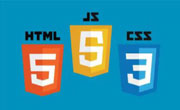iOS使用AVFoundation展示视频
- 作者: 摸几格格
- 来源: 51数据库
- 2020-08-06
本文实例为大家分享了iOS使用AVFoundation展示视频的具体代码,供大家参考,具体内容如下
//
// Capter2ViewController.m
// IosTest
//
// Created by garin on 13-7-19.
// Copyright (c) 2013年 garin. All rights reserved.
//
#import "Capter2ViewController.h"
@interface Capter2ViewController ()
@end
@implementation Capter2ViewController
-(void) dealloc
{
[session release];
[super dealloc];
}
- (id)initWithNibName:(NSString *)nibNameOrNil bundle:(NSBundle *)nibBundleOrNil
{
self = [super initWithNibName:nibNameOrNil bundle:nibBundleOrNil];
if (self) {
// Custom initialization
}
return self;
}
- (void)viewDidLoad
{
[super viewDidLoad];
videoPreviewView=[[UIView alloc] initWithFrame:CGRectMake(10, 10, 320, 200)];
[self.view addSubview:videoPreviewView];
[videoPreviewView release];
// Do any additional setup after loading the view.
//在viewdidload调用下面的函数显示摄像信息
[self setupCaptureSession];
// imgView=[[UIImageView alloc] initWithFrame:CGRectMake(10, 230, 320, 100)];
// imgView.backgroundColor=[UIColor grayColor];
// [self.view addSubview:imgView];
// [imgView release];
UIButton *cloeseBtn=[UIButton buttonWithType:UIButtonTypeRoundedRect];
cloeseBtn.frame=CGRectMake(10, 220, 300, 50);
[cloeseBtn setTitle:@"Press" forState:UIControlStateNormal];
[cloeseBtn addTarget:self action:@selector(closeBtnClick:) forControlEvents:UIControlEventTouchUpInside];
[self.view addSubview:cloeseBtn];
}
-(void) closeBtnClick:(id) sender
{
[session stopRunning];
}
- (void)didReceiveMemoryWarning
{
[super didReceiveMemoryWarning];
// Dispose of any resources that can be recreated.
}
- (void)setupCaptureSession
{
NSError *error = nil;
// Create the session
session = [[AVCaptureSession alloc] init];
// Configure the session to produce lower resolution video frames, if your
// processing algorithm can cope. We'll specify medium quality for the
// chosen device.
session.sessionPreset = AVCaptureSessionPresetLow;
// Find a suitable AVCaptureDevice
AVCaptureDevice *device = [AVCaptureDevice
defaultDeviceWithMediaType:AVMediaTypeVideo];
// Create a device input with the device and add it to the session.
AVCaptureDeviceInput *input = [AVCaptureDeviceInput deviceInputWithDevice:device
error:&error];
if (!input) {
// Handling the error appropriately.
}
[session addInput:input];
// Create a VideoDataOutput and add it to the session
AVCaptureVideoDataOutput *output = [[[AVCaptureVideoDataOutput alloc] init] autorelease];
[session addOutput:output];
// Configure your output.
dispatch_queue_t queue = dispatch_queue_create("myQueue", NULL);
[output setSampleBufferDelegate:self queue:queue];
dispatch_release(queue);
// Specify the pixel format
output.videoSettings =
[NSDictionary dictionaryWithObject:
[NSNumber numberWithInt:kCVPixelFormatType_32BGRA]
forKey:(id)kCVPixelBufferPixelFormatTypeKey];
// If you wish to cap the frame rate to a known value, such as 15 fps, set
// minFrameDuration.
//output.minFrameDuration = CMTimeMake(1, 15);
//AVCaptureConnection *avcaptureconn=[[AVCaptureConnection alloc] init];
//[avcaptureconn setVideoMinFrameDuration:CMTimeMake(1, 15)];
// Start the session running to start the flow of data
[session startRunning];
AVCaptureVideoPreviewLayer* previewLayer = [AVCaptureVideoPreviewLayer layerWithSession: session];
previewLayer.frame = videoPreviewView.bounds; //视频显示到的UIView
previewLayer.videoGravity = AVLayerVideoGravityResizeAspectFill;
// [previewLayer setOrientation:AVCaptureVideoOrientationLandscapeRight];
// if(previewLayer.orientationSupported){
// previewLayer.orientation = mOrientation;
// }
[videoPreviewView.layer addSublayer: previewLayer];
if(![session isRunning]){
[session startRunning];
}
// Assign session to an ivar.
//[self setSession:session];
}
//得到视频流
- (void)captureOutput:(AVCaptureOutput *)captureOutput
didOutputSampleBuffer:(CMSampleBufferRef)sampleBuffer
fromConnection:(AVCaptureConnection *)connection
{
// Create a UIImage from the sample buffer data
return;
UIImage *image = [self imageFromSampleBuffer:sampleBuffer];
//得到的视频流图片
imgView.image=image;
}
// Create a UIImage from sample buffer data
- (UIImage *) imageFromSampleBuffer:(CMSampleBufferRef) sampleBuffer
{
// Get a CMSampleBuffer's Core Video image buffer for the media data
CVImageBufferRef imageBuffer = CMSampleBufferGetImageBuffer(sampleBuffer);
// Lock the base address of the pixel buffer
CVPixelBufferLockBaseAddress(imageBuffer, 0);
// Get the number of bytes per row for the pixel buffer
void *baseAddress = CVPixelBufferGetBaseAddress(imageBuffer);
// Get the number of bytes per row for the pixel buffer
size_t bytesPerRow = CVPixelBufferGetBytesPerRow(imageBuffer);
// Get the pixel buffer width and height
size_t width = CVPixelBufferGetWidth(imageBuffer);
size_t height = CVPixelBufferGetHeight(imageBuffer);
// Create a device-dependent RGB color space
CGColorSpaceRef colorSpace = CGColorSpaceCreateDeviceRGB();
// Create a bitmap graphics context with the sample buffer data
CGContextRef context = CGBitmapContextCreate(baseAddress, width, height, 8,
bytesPerRow, colorSpace, kCGBitmapByteOrder32Little | kCGImageAlphaPremultipliedFirst);
// Create a Quartz image from the pixel data in the bitmap graphics context
CGImageRef quartzImage = CGBitmapContextCreateImage(context);
// Unlock the pixel buffer
CVPixelBufferUnlockBaseAddress(imageBuffer,0);
// Free up the context and color space
CGContextRelease(context);
CGColorSpaceRelease(colorSpace);
// Create an image object from the Quartz image
UIImage *image = [UIImage imageWithCGImage:quartzImage];
// Release the Quartz image
CGImageRelease(quartzImage);
return (image);
}
@end
以上就是本文的全部内容,希望对大家的学习有所帮助,


